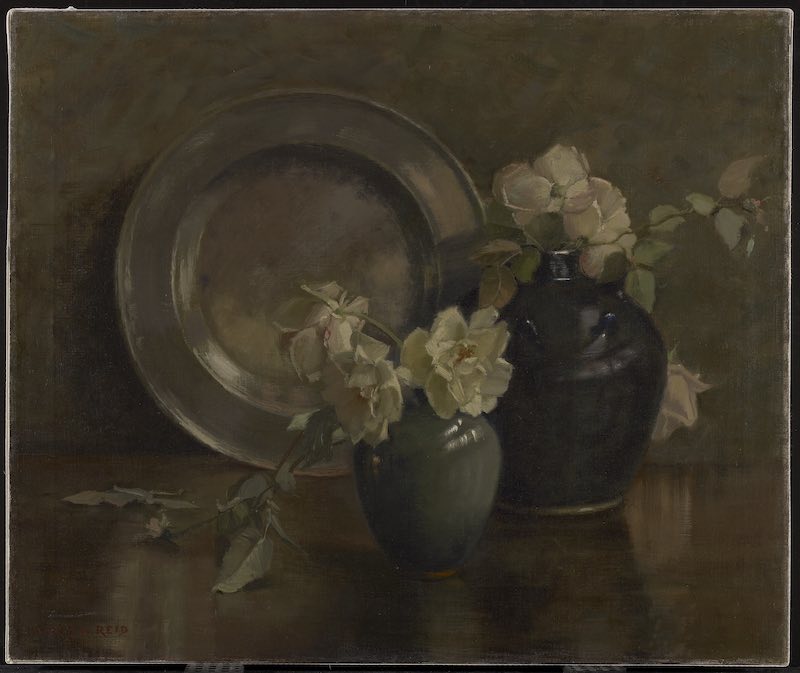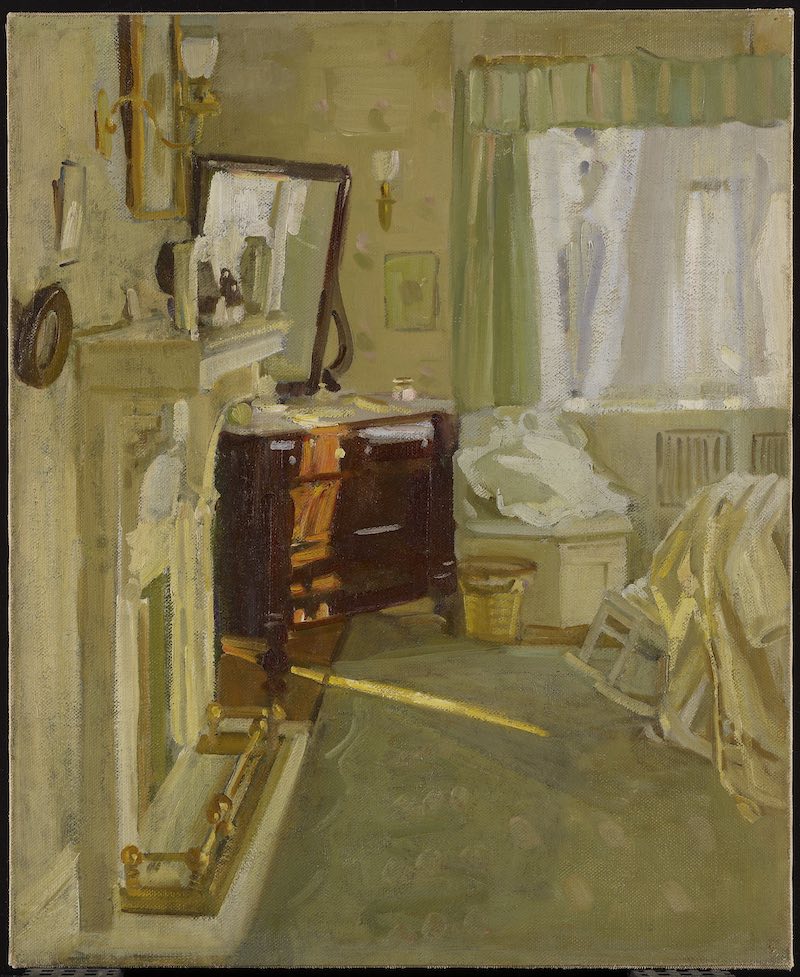In 1922, the Art Gallery of Toronto (now the Art Gallery of Ontario since 1966) held a memorial exhibit for one of the most pioneering female artists of Canada, Mary Hiester Reid. Both she and another female artist, Helen McNicoll, worked to fight the social norms of their time, which actively reinforced womens’ role of staying home and tending to their children. Due to this, opportunities for female artists were few as most women were not allowed to pursue studies of fine art and gain the skills necessary to develop their artistic abilities and style. Then, when roles outside the home were limited, it was an astounding progression that a female artist got her own show in the Art Gallery of Toronto.
While they were among the first women professional artists, today they do not hold the same recognition that other male artists of the time do. When they both died in 1915 and 1921, respectively, the Group of Seven had just blossomed from its infancy, and began to overshadow the two artists’ work with their vibrant and more experimental depictions of Canadian nature. Although these two female artists may have fallen into obscurity for a period of time after their deaths, they still remain trail blazers in the female artist community, and helped to pave the way for other women artists of subsequent generations.
Before the AGO was closed due to the province wide lockdown in November, the AGO hosted The Open Door exhibit, a tribute to Mary Hiester Reid and Helen McNicoll, acting as a homage to its previous version in 1922. Within the exhibit was a wide variety of paintings as the two artists captured different styles and atmospheres. Thus, the exhibit may have elicited anything from joy and buoyancy, to ominimity and tension. At the entrance of the exhibit were two photos, one of each artist. They both capture the artists sitting in their respective studios, surrounded by their daily life as fine painters. However, what stood out about their photographs were the long dresses and the traditional demeanour that they both wore. While these two women were in fact pillars of the female art community, their traditional garb is a nod to the deeply ingrained rhetoric of female modesty and domestication at the time.
Below is a history of Mary Hiester Reid and Helen McNicoll, with the help of the assistant curator of The Open Door exhibit, Renee van der Avoird.
Mary Hiester Reid
Mary Hiester Reid was a well established and respected member of the Canadian art scene, after she moved to Canada in her thirties from Philadelphia, having studied fine art in London. She was an active member of the arts community, as she participated in exhibitions across Canada, hosted frequent studio visits and had a number of female students who she made sure to teach and inspire in ways she had to fight to receive in art school. Her primary focus was tonalism, which is a painting technique characterized by soft, blurred lines, and a subtle gradient of colours as they build up to form an image. As it was in fashion at the time for tonalist painters, she worked with darker palettes containing colours such as deep greys, blues, greens and browns. For her subjects, she was inspired by her travels and the landscape surrounding where she lived in Wychwood Park, Toronto.

In her painting “Castles in Spain”, we can see a glimpse of a trip she took to Spain, to visit her sister who lived there. Additionally, in her painting “At Twilight, Wychwood Park”, we can see a dimly lit evening scene of the forest adjacent to her neighbourhood. One of the main themes between her paintings is botanical accuracy, as she predominantly painted still life type images of floral arrangements. She used the floral genre as avenue for tonalism, layering in multiple shades of colour to portray flower petals or the leaves on trees. However, more so than simply her subject matter, she aimed to to convey drama and emotion through her work. She was often inspired by music, and utilized the principles of rhythm and flow to evoke a similar feeling from her paintings that a song might. In one painting, “A Harmony in Grey and Yellow”, she works with brush stroke movement and colour blending, to fill the picture with a sense of lyricism and rhythm. While on the surface the paintings appear to be simply a bouquet of intricately rendered roses, there is a world of colour building, emotion and gravity beneath them.
Helen McNicoll
Helen McNicoll grew up in Montreal, and came from a very wealthy family. From a young age, she demonstrated unmistakable interest and talent in fine arts, and eventually traveled to study impressionism in France, England and Italy.
At the time, impressionism was considered to be a rather modern art form, and was used in both drawing and painting mediums. It focuses on the study of light, air, and movement, and their interconnectedness as sunlight and shadow effect objects. Because of the nature of the subject matter, impressionists’ work usually takes place outdoors.
Focusing on outdoor subjects, McNicoll would often depict images of women and children, utilizing a variety of bright and pastel colours, as well as small and repetitive brush strokes. However her paintings of women and children were unlike their typical portrayal at the time. Rather than being particularly posed or with a certain expression on their faces, McNicoll aimed to capture them in their authentic daily life. She used the people surrounding her, usually those who worked on farms doing physical chores as her models.

In her paintings, the women did not look happy necessarily, as they were always working and thus otherwise occupied. In “The Little Worker”, we can see a young woman carrying a pail with a flock of chickens following her, and in “The Gleaner” we can see a woman carrying a bale of hay. In the majority of her works, we do not see the subjects meet the gaze of the observer, but rather remain focused on their tasks with a blunt or tired expression across their faces. This type of deception was meant to portray the real women’s experience of the time, as she represented them as independent women, rather than objects used to please men. In this way, McNicoll used her work to reflect herself, as she was an independent woman who never married or had children, but rather focused solely on her artwork.
The exhibition will still be on view when the Gallery reopens.

